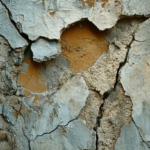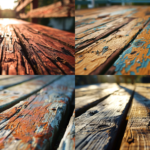Last Updated on 26th December 2023
Drywall damage is a common issue faced by homeowners and can be a source of frustration. However, with the right knowledge and tools, it is possible to repair the damage and restore the wall to its original condition. This article provides a step-by-step guide on how to repair drywall damage, from assessing the extent of the damage to finishing and painting the repaired wall. Follow these professional tips to successfully tackle drywall repair projects.
Assessing the Extent of the Damage
During the initial inspection, it is essential to carefully evaluate and assess the extent of the damage caused to the drywall in order to formulate an effective plan for repairs. Determining repair costs and hiring professional help are crucial aspects of this process. By thoroughly examining the damaged area, one can determine the type and severity of the damage. This assessment helps in estimating the cost involved in repairing the drywall. Hiring professional help is recommended for accurate evaluation and cost estimation. Professionals possess expertise in identifying hidden damages that may not be visible to untrained eyes. They can provide an accurate analysis, ensuring that all repair costs are accounted for. Additionally, professionals can offer guidance on the best course of action for repairing the drywall, considering factors such as materials, techniques, and timeframes.
Gathering the Necessary Tools and Materials
To successfully complete the repairs, it is crucial to gather all the necessary tools and materials for the job, ensuring that you are well-prepared and equipped with everything needed to restore the damaged drywall. When it comes to choosing the right drywall repair technique, it is important to consider the extent of the damage and the skills required for each method. Common techniques include patching, spackling, and joint compound application. Each technique has its own advantages and disadvantages, so it is important to carefully evaluate which method will work best for your specific situation. Additionally, finding alternative materials for patching can be beneficial, especially if you are looking for a more cost-effective solution. Some alternatives include using mesh tape instead of traditional joint tape or using scrap drywall pieces for smaller holes. By gathering the right tools and materials and exploring different repair techniques, you can ensure a successful drywall repair job.
Preparing the Damaged Area for Repair
Prior to commencing the repair process, it is essential to thoroughly assess the damaged area and meticulously remove any loose debris or fragments, ensuring a clean and stable surface for the subsequent repair work. When repairing drywall, proper cleaning and priming before repair plays a crucial role in achieving a seamless and long-lasting finish. Cleaning the damaged area with a mild detergent and water solution helps remove any dirt, grease, or stains that could affect the adhesion of the repair materials. After cleaning, it is important to prime the area with a high-quality primer to seal the surface and promote better adhesion of the repair compound. This step ensures a smooth and uniform appearance once the repair is completed. Additionally, to prevent future damage, it is recommended to address any underlying issues that caused the damage, such as fixing leaks or reinforcing weak structural elements. Regular inspections and maintenance can help identify and address potential issues before they cause significant damage to the drywall. By following these tips, homeowners can ensure a successful drywall repair and minimize the risk of future damage.
Patching Small Holes and Cracks
Regularly inspecting and promptly patching small holes and cracks in drywall is essential to maintain its integrity and prevent further damage. When it comes to repairing nail holes in drywall, there are a few steps to follow. First, you will need to remove any loose debris from the hole using a putty knife or sandpaper. Then, apply a thin layer of spackling compound to the hole, using the putty knife to smooth it out. Allow the compound to dry, and then sand it down until it is smooth and flush with the surrounding wall. Filling in hairline cracks in drywall requires a similar approach. Use a utility knife to widen the crack slightly, and then apply joint compound with a putty knife. Smooth out the compound and let it dry before sanding. Regularly inspecting and repairing these small imperfections will help to maintain the overall integrity and appearance of your drywall.
Fixing Larger Damaged Sections
One option for addressing larger damaged sections of drywall is to hire a professional contractor who can assess the extent of the damage and recommend appropriate repair methods. When it comes to repairing large holes or replacing damaged drywall, it is crucial to have the expertise of a skilled professional. These professionals have the necessary tools and knowledge to ensure a seamless repair. They can accurately assess the extent of the damage and determine whether the damaged section needs to be completely replaced or can be repaired with patching techniques. They can also recommend the best materials and techniques to use for the repair. By hiring a professional contractor, you can have peace of mind knowing that the repair will be done correctly and efficiently, saving you time and effort in the long run.
Finishing and Painting the Repaired Wall
To complete the repair process, it is essential to meticulously apply a smooth finish and expertly paint the repaired wall. After repairing any cracks or holes in the drywall, the next step is to ensure the surface is smooth and even. This can be achieved by using a joint compound to fill in any imperfections and sanding the area until it is flush with the surrounding wall. Once the surface is smooth, it is time to choose the right paint color. Consider the overall aesthetic of the room and the desired mood you want to create. Some popular options include neutral tones for a timeless look or bold colors to make a statement. Whatever color you choose, make sure to apply it evenly and consistently for a professional finish.




